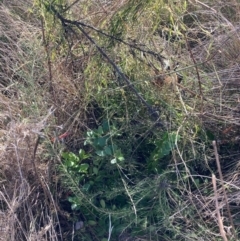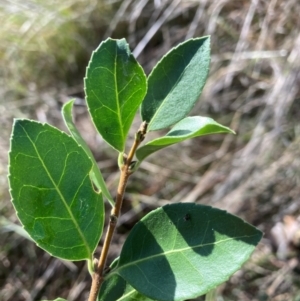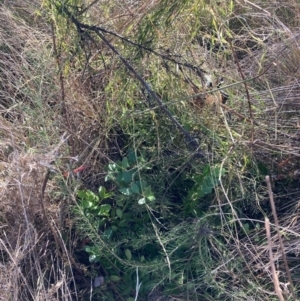Sighting 4435775
Can you identify this sighting?
Identification history
Identify this sighting
Please Login or Register to identify this sighting.
User's notes
I would appreciate if anyone can help identify the plant in the first photograph.
We have a problem with garden waste dumping in the reserve east of the Fair - this is the fourth time in less than 3 weeks. Garden waste and food such as rotten veggies and meat as well as old bread are dumped fairly regularly at the Fair.
I hope to identify the garden from where the prunings originate and perhaps Government staff can leave a friendly reminder at the residence that nature reserves are not for garden waste dumping... Unfortunately, the dumped waste contains seeding grass as well.
7 comments
MichaelMulvaney
wrote:
1 Jul 2022
Waltraud the opposite leaves and the way the stem changes planes at each internode (which reminds me of claret ash), makes me think this is a member of the olive family. The best fit within this family seems to be Osmanthus, appropriately named Devilwood. But I am too unsure to give it a positive ID.
abread111
wrote:
4 Jul 2023
I have Osmanthus in my garden and my neighbour has Sasanqua, so I'll compare your photo with both tomorrow. Barb
abread111
wrote:
5 Jul 2023
Bit late now, since this dumping was in May, but the photo does not match the Osmanthus from our garden - the leaf arrangement is the same, the venation is similar, the shape is a bit longer and narrower in our one, and it has smooth edges. But maybe there is another species of Osmanthus commonly grown.
Camellia sasanqua has alternate leaves and the leaves have a finely serrated margin, more serrations than in the photo, so the id remains unresolved.
Camellia sasanqua has alternate leaves and the leaves have a finely serrated margin, more serrations than in the photo, so the id remains unresolved.
abread111
wrote:
5 Jul 2023
So I've read the description for Osmanthus fragrans and the leaf edges can be entire or serrate and I've seen various photos on the net which show a range of serrations. Suggest this is a possible id.
Best discovered by its perfume when flowering - walk the local streets then... (not in flower now).
Best discovered by its perfume when flowering - walk the local streets then... (not in flower now).
abread111
wrote:
5 Jul 2023
Well, the leaves in the unknown plant are definitely opposite in pairs and change plane at each node as MichaelMulveney said. Osmanthus does that. Camellia does not have the leaves in pairs, they alternate singly on opposite sides of the stem. Definitely not Camellia.
Sighting information
- 4 - 15 Abundance
- 27 May 2022 10:02 AM Recorded on
- waltraud Recorded by
Additional information
- 30cm to 1 metre Plant height
Record quality
- Images or audio
- More than one media file
- Confirmed by an expert moderator
- Nearby sighting(s) of same species
- GPS evidence of location
- Description
- Additional attributes







